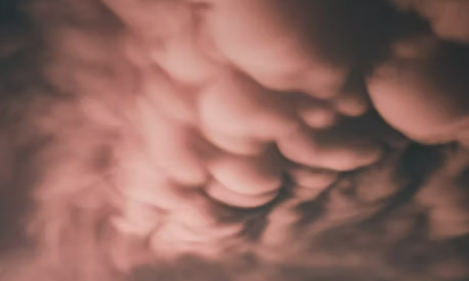On Friday, May 26, mammatus clouds hovered in the sky over Encino, New Mexico, as the National Weather Service (NWS) reported a tornado had touched down nearby. Additionally, the NWS issued a severe thunderstorm warning on Friday, indicating that quarter-sized hail and 60 mph winds could occur.
Also Read| Who is Cameron Robbins, Louisiana graduate missing after dare on Bahamas sunset cruise?
What are Mammatus Clouds?
Mammatus clouds, also known as mammatocumulus clouds, are a rare type of cloud defined by characteristic structures that dangle beneath the base of the cloud and have the form of a pouch or bubble. As the cloud formations resemble hanging breasts or inverted pouches, the name “mammatus” is derived from the Latin word “mamma,” which means breast or udder.
Although they can occur in other types of clouds, these cloud forms are often associated with strong thunderstorms or cumulonimbus clouds. Mammatus clouds are frequently seen after a storm has passed or in the hours following an especially powerful rainstorm. During sunrise or sunset, they can be seen in a variety of hues, such as white, gray, or even pink or orange tones.
The turbulent motion within the thunderstorm cloud causes mammatus clouds to form. The air around the storm cloud is pulled upward as it rises, which causes the air to cool and condense into cloud droplets. Rain or hail particles are carried by the downdraft, which is the air descending within the cloud. This downdraft finds a stable layer of air as it approaches the cloud’s base, which prevents further downward motion. The descending air spreads horizontally as a result, giving rise to the mammatus clouds’ distinctive pouch-like shapes.
Also Read| Chicago shootings: 12 shot, 3 dead in overnight shootings all over Chicagoland area
Mammatus clouds do not necessarily predict severe weather, despite their menacing look. In actuality, they are frequently noticed after the heaviest part of a rainstorm has gone. Nevertheless, the existence of mammatus clouds suggests an extremely erratic and turbulent environment, which may imply that the storm system is capable of producing severe weather conditions like torrential rain, large hail, or powerful winds.







